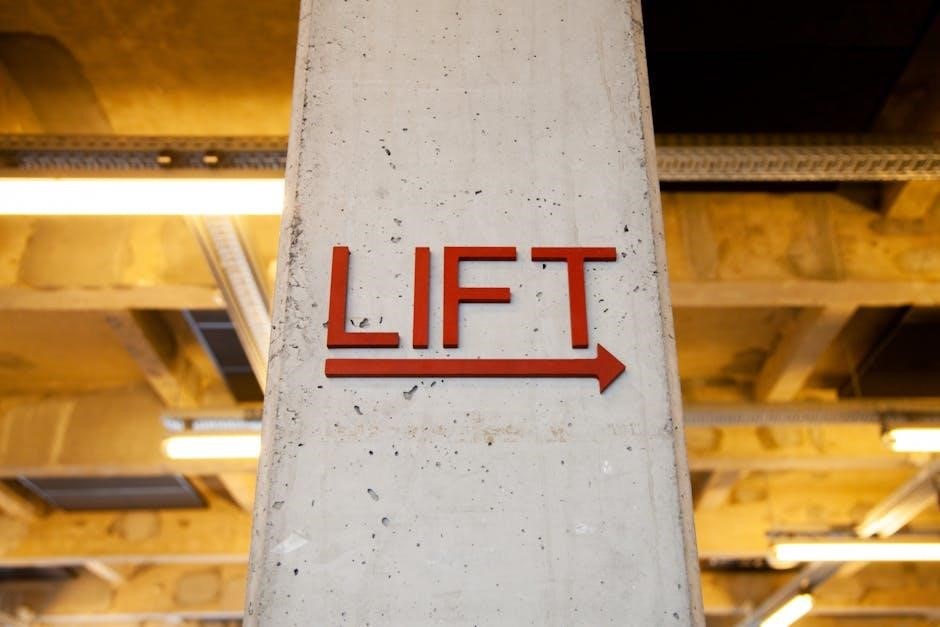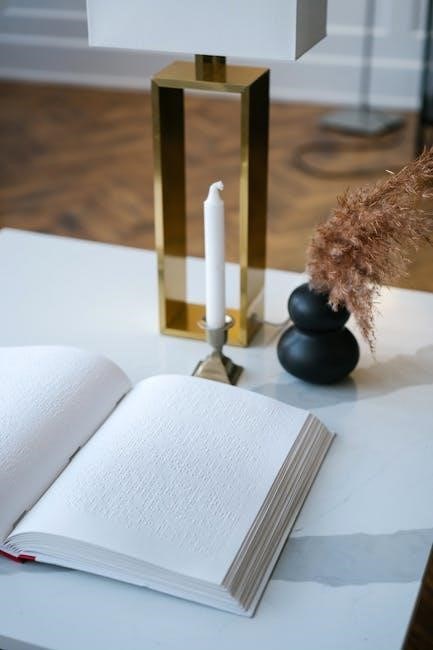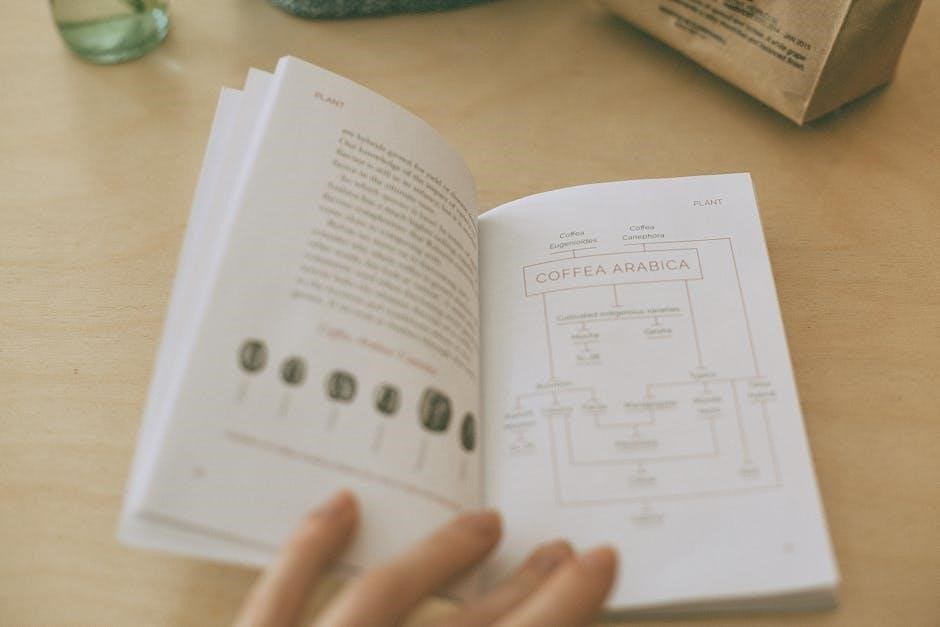Bra Size Guide
Bra Size Guide is essential for finding the perfect fit‚ ensuring both comfort and support. This comprehensive guide navigates the complexities of bra sizing‚ offering tools‚ measurement instructions‚ and conversion charts. By understanding these elements‚ you can confidently shop for bras that enhance your silhouette and overall well-being.

Bra sizing‚ often perceived as straightforward‚ is a nuanced process impacting comfort‚ support‚ and overall well-being. Many women wear the wrong bra size‚ leading to discomfort‚ poor posture‚ and even health issues. This section introduces fundamental concepts‚ emphasizing that bra size consists of a band size (numerical) and a cup size (alphabetical).
Understanding how these two elements interact is the first step towards achieving a perfect fit. Factors like bra style‚ brand‚ and individual body variations influence the ideal size. This introduction demystifies common misconceptions‚ highlighting the importance of regular measurements and professional fittings. A properly fitted bra enhances your shape‚ relieves pressure points‚ and boosts confidence.
We’ll explore the basics of measuring your band and bust‚ interpreting bra size charts‚ and recognizing signs of a poorly fitting bra. Whether you’re a seasoned bra shopper or new to the world of lingerie‚ this introduction provides the foundation for finding bras that feel as good as they look. Remember‚ accurate bra sizing is an investment in your comfort and health.
Why Accurate Bra Sizing Matters
Accurate bra sizing is paramount for numerous reasons‚ extending far beyond mere aesthetics. A well-fitted bra provides essential support‚ alleviating strain on your back‚ neck‚ and shoulders. Ill-fitting bras can lead to discomfort‚ chafing‚ and even long-term health problems like back pain and poor posture. The right size ensures that the bra’s straps and band distribute weight evenly‚ preventing pressure points and promoting proper alignment.
Beyond physical health‚ accurate bra sizing significantly impacts confidence and self-esteem. A supportive and comfortable bra enhances your natural shape‚ improving the fit of your clothes and boosting your overall appearance. Conversely‚ a poorly fitted bra can create unflattering lines‚ cause spillage‚ and detract from your silhouette.
Furthermore‚ understanding your correct bra size saves time and money. By knowing your measurements‚ you can confidently shop online and in stores‚ avoiding the frustration of constantly trying on different sizes. Investing in properly fitted bras is an investment in your well-being‚ ensuring comfort‚ support‚ and a flattering shape for years to come. Accurate bra sizing truly is the foundation for a confident and comfortable you.
Tools Needed for Measurement
To embark on the journey of accurate bra sizing‚ gathering the right tools is essential. The primary instrument you’ll need is a flexible measuring tape‚ preferably one with both inches and centimeters for versatility. Ensure the tape is in good condition‚ without any stretching or damage‚ to guarantee precise readings.
Next‚ it’s beneficial to have a mirror readily available. This allows you to visually confirm that the measuring tape is positioned correctly and horizontally around your body‚ particularly when measuring your band size. A mirror helps maintain accuracy and prevents the tape from slipping or angling.
Lastly‚ wear a non-padded bra that closely resembles your everyday style. This ensures that the measurements reflect your typical breast shape and size. Avoid wearing heavily padded or minimizing bras‚ as they can distort your natural form and lead to inaccurate results. With these simple tools at hand‚ you’ll be well-equipped to take precise bra measurements and discover your perfect fit. Having a friend assist can also be helpful for ensuring the tape measure is level around your back.
Measuring Your Band Size
Measuring your band size accurately is the first crucial step in determining your correct bra size. Begin by wearing a non-padded bra that provides minimal shaping or support to ensure the most accurate measurement. Stand in front of a mirror to help maintain proper positioning of the measuring tape.

Wrap the measuring tape directly under your bust‚ where the band of your bra typically sits. The tape should be snug but not too tight‚ remaining parallel to the floor around your torso. Ensure the tape lies flat against your skin without digging in or creating indentations.
Take a deep breath and exhale‚ noting the measurement on the tape while keeping it in place. If the measurement is an even number‚ that is your band size. If it’s an odd number‚ round up to the next even number. For example‚ if you measure 31 inches‚ round up to a band size of 32. This measurement forms the foundation for calculating your overall bra size and ensuring a comfortable‚ supportive fit.

Measuring Your Bust Size
After determining your band size‚ the next essential step is measuring your bust size. Continue wearing the same non-padded bra you used for the band measurement to ensure consistency and accuracy. Stand tall with your arms relaxed at your sides‚ maintaining a natural posture.
Wrap the measuring tape around the fullest part of your bust‚ ensuring the tape remains parallel to the floor. The tape should be snug but not overly tight‚ allowing for a comfortable and accurate measurement. Avoid pulling the tape too tightly‚ as this can distort the measurement and lead to an incorrect bra size.
Take a deep breath and exhale‚ noting the measurement on the tape while keeping it in place. This measurement represents the circumference of your bust at its fullest point and is crucial for determining your cup size. To find your cup size‚ you’ll subtract your band size from this bust measurement. The difference between the two measurements corresponds to a specific cup size‚ as indicated on a bra size chart. This step completes the necessary measurements for finding your ideal bra size.
Using a Bra Size Calculator
After manually measuring your band and bust sizes‚ a bra size calculator can be an invaluable tool to confirm your measurements and determine your bra size. These calculators are readily available online and simplify the process by automatically calculating your recommended bra size based on the information you provide. To use a bra size calculator effectively‚ input your band and bust measurements accurately‚ ensuring you select the correct units of measurement (inches or centimeters).
Once you’ve entered your measurements‚ the calculator will typically display your recommended bra size‚ including both the band size and cup size. Some calculators also provide additional information‚ such as sister sizes‚ which can be helpful if your calculated size isn’t a perfect fit. Additionally‚ bra size calculators often offer conversions for different regional sizing systems (US‚ UK‚ EU)‚ allowing you to easily translate your size when shopping from various brands or locations.
Keep in mind that bra size calculators provide an estimated size‚ and individual fit may vary depending on the bra style‚ brand‚ and your body shape. It’s always recommended to try on bras in person whenever possible to ensure the most comfortable and supportive fit.
Understanding Bra Size Charts (US‚ UK‚ EU)
Navigating the world of bra sizes can be confusing‚ especially when different regions use varying sizing systems. Understanding the nuances of US‚ UK‚ and EU bra size charts is crucial for ensuring a proper fit‚ regardless of where you’re shopping.
The US and UK systems are relatively similar‚ using inches for band measurements and letters for cup sizes. However‚ it’s important to note that some brands may have slight variations in their sizing. EU bra sizes‚ on the other hand‚ use centimeters for band measurements‚ making it essential to convert your measurements accurately. EU cup sizes also differ slightly from US and UK sizes‚ often using a numerical system or a combination of letters and numbers.
To effectively use bra size charts‚ first‚ determine your band and bust measurements in inches or centimeters. Then‚ consult the appropriate chart for the region you’re interested in. Pay close attention to the cup size designations‚ as they can vary significantly between systems. Keep in mind that these charts are a general guide‚ and individual fit may still depend on the specific bra style and brand.
Bra Size Conversion Between Regions
Converting bra sizes between different regions is essential for international shopping and understanding size variations. The primary regions to consider are the US‚ UK‚ and EU‚ each employing unique sizing conventions.
For example‚ a 34C in the US is typically equivalent to a 34C in the UK. However‚ converting to the EU system requires adjusting both the band and cup size. A 34-inch band (US/UK) is roughly equivalent to an 75 band in the EU. The cup size conversion is not always direct‚ and it’s important to consult a conversion chart to find the appropriate EU cup size.
When converting‚ it’s also wise to consider that sizing can vary between brands and styles; Always refer to the specific brand’s size chart when possible. Online bra size converters are helpful tools‚ but should be used as a starting point. Ultimately‚ trying on bras in different sizes is the best way to ensure a comfortable and accurate fit when navigating international bra sizes. Understanding these conversions will empower you to make informed choices.
Common Bra Fitting Issues and Solutions
Several common issues can arise when fitting a bra‚ each indicating a specific problem with the bra’s size or style. One frequent issue is the band riding up in the back‚ which suggests the band is too large and not providing adequate support. The solution is to try a band size smaller‚ ensuring it fits snugly around your torso.
Another common problem is spillage over the top or sides of the cups‚ indicating that the cup size is too small. In this case‚ you should try a cup size larger to fully contain the breast tissue. Conversely‚ if the cups are wrinkling or have gaps‚ the cup size is likely too large‚ and you should try a smaller cup size.
Additionally‚ straps digging into your shoulders often mean the band is not providing enough support. Loosening the straps might offer temporary relief‚ but the best solution is to ensure the band fits properly. If the bra’s center gore (the piece between the cups) doesn’t sit flush against your chest‚ it may indicate an issue with the band or cup size. Addressing these fitting issues with the appropriate adjustments will lead to a more comfortable and supportive bra experience.
Different Types of Bras and Their Fit
Bras come in a wide array of styles‚ each designed to offer a unique fit and level of support. Understanding these differences is crucial for selecting the right bra for various occasions and outfits. For example‚ a full-coverage bra typically encases the entire breast‚ providing maximum support and a smooth silhouette‚ ideal for everyday wear.
A plunge bra‚ on the other hand‚ features a lower cut in the center‚ making it perfect for wearing with low-cut tops and dresses. The fit is often more revealing‚ offering less coverage but enhanced cleavage. Sports bras are specifically designed for high-impact activities‚ offering maximum support and compression to minimize bounce and movement. These bras often have wider straps and a secure band to keep everything in place.
Additionally‚ there are strapless bras‚ which rely on a snug band and molded cups for support‚ making them suitable for strapless or off-the-shoulder outfits. Each bra type is tailored to meet different needs‚ ensuring comfort‚ support‚ and the desired aesthetic for any occasion. Choosing the right style involves considering both the fit and the intended use.
The Impact of Weight Changes on Bra Size
Weight fluctuations‚ whether gained or lost‚ can significantly impact your bra size‚ affecting both the band and cup measurements. As weight increases‚ the band size may need to increase to accommodate a larger rib cage‚ while the cup size often increases due to changes in breast tissue. Conversely‚ weight loss can lead to a smaller band size and a reduction in cup size as breast tissue decreases.
It’s essential to reassess your bra size after any significant weight change to ensure a comfortable and supportive fit. An ill-fitting bra due to weight fluctuations can cause discomfort‚ chafing‚ and inadequate support. Regularly measuring your band and bust size will help you identify when it’s time to update your bra wardrobe.
Consider that even small weight changes can affect how your current bras fit. Therefore‚ it’s wise to check your measurements periodically to maintain optimal comfort and support. Adjusting your bra size accordingly will ensure that you continue to experience the best possible fit‚ regardless of any changes in your weight.
Tips for Finding the Right Bra When Shopping Online
Shopping for bras online can be convenient‚ but it also presents unique challenges in finding the right fit. To increase your chances of success‚ start by accurately measuring your band and bust size using a soft measuring tape. Refer to online bra size calculators and charts‚ paying close attention to whether the measurements are in inches or centimeters.
Read customer reviews to gain insights into the fit and quality of the bra. Look for comments regarding sizing accuracy‚ comfort‚ and support. Pay attention to return policies‚ ensuring that you can easily exchange or return bras that don’t fit properly. Consider ordering multiple sizes or styles to try on at home and compare the fit.
Familiarize yourself with different bra types and their fit characteristics. Balconette bras‚ for example‚ may fit differently than full-coverage bras. Finally‚ don’t hesitate to contact the retailer’s customer support for assistance with sizing or style recommendations. With careful planning and attention to detail‚ you can find the perfect bra fit online;
Caring for Your Bras to Maintain Their Fit
Proper care is essential to prolong the life and maintain the fit of your bras. Hand-washing is the gentlest method‚ using a mild detergent specifically designed for delicate fabrics. If machine washing‚ use a lingerie bag on a delicate cycle with cold water to protect the bra’s shape and elasticity.
Avoid using harsh chemicals like bleach‚ which can damage the fabric and elastic. Always fasten the hooks before washing to prevent snagging on other items. When drying‚ never put bras in the dryer‚ as the heat can break down the elastic and distort the shape. Instead‚ gently reshape the cups and lay them flat to air dry.
Store your bras properly to prevent them from losing their shape. Avoid folding them in half‚ as this can create creases in the cups. Instead‚ stack them neatly in a drawer or hang them on padded hangers. Rotate your bras regularly to allow the elastic to recover and prevent over-wearing. With proper care‚ your bras will maintain their fit and provide the support you need for longer.


